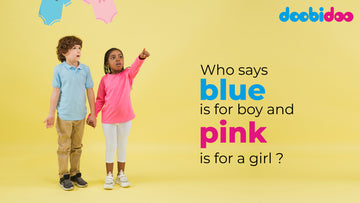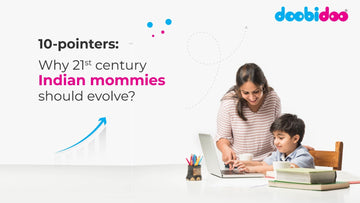For generations, the colour blue has been associated with boys, while pink has been linked to girls, perpetuating gender stereotypes in society. However, these colour associations are not inherent, but rather socially constructed norms that have evolved over time. In this blog, we will challenge the notion that blue is exclusively for boys and pink for girls, exploring the history behind these gendered colour preferences and advocating for a more inclusive and open-minded approach to colours.
1. The Historical Origins of Colour Associations -
The association of blue with boys and pink with girls is a relatively recent phenomenon, dating back to the early 20th century. Prior to that, the colours were not gender-specific, and various cultures had different colour associations for boys and girls. For example, in the 19th century, pink was often considered a strong and masculine colour, while blue was associated with delicacy and femininity.
2. The Influence of Marketing and Consumerism -
In the mid-20th century, marketing and consumerism played a significant role in solidifying the gender-specific colour preferences. Advertisers began promoting pink as a feminine colour and blue as a masculine colour to boost sales and create distinct markets for baby products. This marketing strategy led to the reinforcement of gender stereotypes in colour preferences.
3. The Impact of Cultural and Societal Norms -
Cultural and societal norms also contribute to the perpetuation of gendered colour associations. Parents, caregivers, and family members often unknowingly reinforce these stereotypes by gifting toys, clothes, and accessories in gender-specific colours, perpetuating the idea that certain colours are exclusively meant for boys or girls.
4. Embracing Gender Neutrality -
As we move towards a more inclusive and accepting society, it is essential to challenge and break free from these rigid colour norms. Embracing gender neutrality in colours allows children to explore their preferences freely and express their individuality without constraints. All colours should be considered open to everyone, regardless of gender.
5. Empowering Children to Choose -
Empowering children to choose the colours they love fosters a sense of autonomy and selfexpression. Encouraging them to embrace colours based on personal preference rather than societal expectations promotes a more diverse and inclusive environment.
6. Diverse Representation in Media and Advertising -
Media and advertising play a vital role in shaping societal norms. By showcasing diverse colour choices and representations in advertisements, TV shows, and movies, we can challenge traditional colour associations and promote a more inclusive narrative.
The idea that blue is for boys and pink is for girls is a social construct that has been perpetuated over time. Understanding the historical origins of these colour associations allows us to challenge and rethink their significance in today's world. Let us embrace a more open-minded approach to colours, encouraging children to explore and choose based on their individual preferences. By breaking free from these limiting gender stereotypes, we can create a more inclusive and accepting society where children are free to express themselves authentically, regardless of the colours they love. After all, colours are for everyone to enjoy, without any restrictions or limitations based on gender.
PS: Generally, baby diapers are gender-neutral. We at Doobidoo stand reinforced for an improved mind change.
And now a question for all you parents: How do shopping choices take shape for parents with twins, wherein one is a boy and another is a girl? Do comment below with your opinions.




